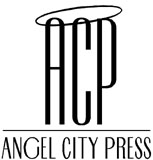In honor of World Architecture Day — a day that draws attention to the role architects plays in improving lives and designing better futures—here are three books published by Angel City Press that showcase the impact of great architecture. The Crestwood Hills housing development, the Walt Disney Concert Hall and the Los Angeles Public Library all reflect these lofty goals in our Los Angeles landscape.
 On October 5, 1947, 300 people attended the groundbreaking ceremony for a new housing development in what would become known as the Crestwood Hills neighborhood in Brentwood. Crestwood Hills would eventually be recognized as “the only successful large-scale modern housing cooperative in the West.” Author and architect Cory Buckner documents the conceptualization, building, and challenges of this planned community in her book Crestwood Hills: The Chronicle of a Modern Utopia. During the post-WWII housing shortage, four musicians sought to build homes that reflected their progressive ideas, so they developed the Mutual Housing Association that grew to 400 members. A team of midcentury architects that included A. Quincy Jones were hired to design the 160 homes. As the Los Angeles Review of Books detailed:
On October 5, 1947, 300 people attended the groundbreaking ceremony for a new housing development in what would become known as the Crestwood Hills neighborhood in Brentwood. Crestwood Hills would eventually be recognized as “the only successful large-scale modern housing cooperative in the West.” Author and architect Cory Buckner documents the conceptualization, building, and challenges of this planned community in her book Crestwood Hills: The Chronicle of a Modern Utopia. During the post-WWII housing shortage, four musicians sought to build homes that reflected their progressive ideas, so they developed the Mutual Housing Association that grew to 400 members. A team of midcentury architects that included A. Quincy Jones were hired to design the 160 homes. As the Los Angeles Review of Books detailed:
Steeped in the modernist legacy that sought to create a better world through design, their vision of an improved lifestyle hinged on clean geometries, walls of glass, and open floor plans.
 Commemorating the 10th anniversary of Frank Gehry’s Walt Disney Concert Hall, Los Angeles Times architectural critic Christopher Hawthorne explained that Gehry “wanted his design to protect the idea of the concert hall as refuge — but also to embody the essential informality of Los Angeles. He wanted to demystify and democratize classical music…” Los Angeles photographer Gary Leonard documented the construction of this concert hall refuge in a collection of his photographs Symphony in Steel: Walt Disney Concert Hall Goes Up. As Leonard remarked in his book:
Commemorating the 10th anniversary of Frank Gehry’s Walt Disney Concert Hall, Los Angeles Times architectural critic Christopher Hawthorne explained that Gehry “wanted his design to protect the idea of the concert hall as refuge — but also to embody the essential informality of Los Angeles. He wanted to demystify and democratize classical music…” Los Angeles photographer Gary Leonard documented the construction of this concert hall refuge in a collection of his photographs Symphony in Steel: Walt Disney Concert Hall Goes Up. As Leonard remarked in his book:
Los Angeles architecture can be audacious, cerebral, and impermanent. Nothing is sacred. The city is never in stasis. It’s hyper-kinetic; it doesn’t stay put for more than a second. You could say it’s on photographer time: it can only be captured in the instant it takes to push that button, and then it’s already becoming something else, something unexpected.
 Bertram Goodhue’s initial look for the Central Library in downtown featured the Spanish Colonial architecture he was renowned for. Stephen Gee, co-author (with photographer Arnold Schwartzman) of Los Angeles Central Library: A History of Its Art and Architecture, writes that Architectural Forum declared Goodhue “the greatest single factor influencing the present growth of good Spanish architecture in California.” Yet, as Gee continued, the Central Library so inspired him to evolve in his creative design that “What he delivered in the end was an exotic blend of Spanish, Egyptian, Byzantine, and Islamic influences, the vision of an architect at his peak, unconfined by expectation.” As Everett Robbins Perry, City Librarian from 1911 to 1933, recounted:
Bertram Goodhue’s initial look for the Central Library in downtown featured the Spanish Colonial architecture he was renowned for. Stephen Gee, co-author (with photographer Arnold Schwartzman) of Los Angeles Central Library: A History of Its Art and Architecture, writes that Architectural Forum declared Goodhue “the greatest single factor influencing the present growth of good Spanish architecture in California.” Yet, as Gee continued, the Central Library so inspired him to evolve in his creative design that “What he delivered in the end was an exotic blend of Spanish, Egyptian, Byzantine, and Islamic influences, the vision of an architect at his peak, unconfined by expectation.” As Everett Robbins Perry, City Librarian from 1911 to 1933, recounted:
We wanted our building to express warmth, hospitality, attractiveness and invitation, Perry explained. It took some courage to go counter to established taste in library architecture. It was with even greater trepidation that we discarded the usual interior arrangement and substituted a plan which makes our unique among library of the country….
The titles above illustrate a sample of books on the ACP list that are related to the region’s architecture. Other titles for the architecture aficionado include:
- Iconic Vision: John Parkinson, Architect of Los Angeles
- Colcord — Home
- Iconic LA: Stories of L.A.'s Most Memorable Buildings
- Landmark L.A. (out of print, but available used)
- Aline Barnsdall's Olive Hill Project
- Downtown in Detail
- Master Architects of Southern California: Gordon B. Kaufmann
[03-Oct-2016]
